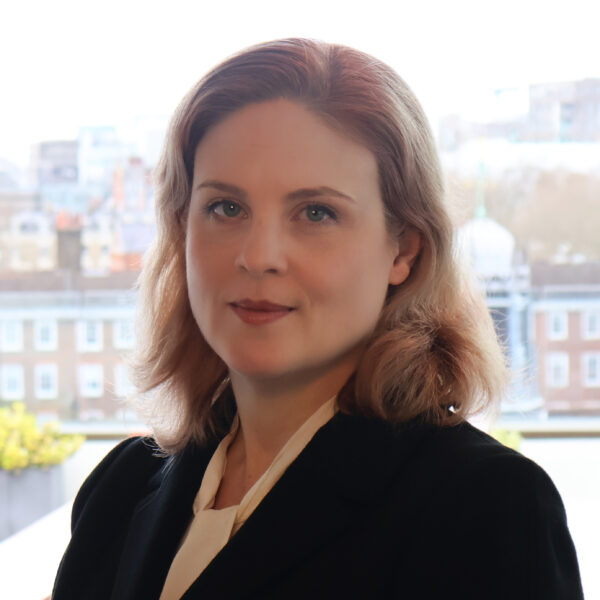LGBT+ History Month – Celebrating the “B”

Emma Hynes, ally, spoke with acclaimed Australian author Krissy Kneen to understand more about bisexuality.
Lawyers seek precision in terms. We ascribe the narrowest possible meaning to words: filleting text; wrenching significance from the lowliest comma; fashioning arguments that turn on a single letter.
So when Hardwicke asked me to write an article focused on the B in LGBT+, I could not help myself but extract that letter and consider its meaning in isolation. That is why, I think, my early attempts at this article have been so hopeless.
Happily, I have just had an illuminating and inspiring zoom call with Australian author Krissy Kneen, who agreed to help me with this article, and perhaps give it a little artsy glamour.
She identifies as bisexual, although doesn’t necessarily tie herself to that term. In fact, she explained that she considered isolating the “B” in LGBT+ to be a curious approach, one which may be ultimately unhelpful.
She is a woman in a long term relationship with a man who identifies as heterosexual. In heteronormative spaces, the assumption is almost always that she is straight, an assumption she confronts in her everyday transactions as well as in her writing. She describes battles with her editor over lines that indicate a character is bisexual: not a distracting digression but an important – no, essential – note.
At the same time, in lesbian spaces, the assumption can be the other way. The fact that she is in a relationship with a man can make her somewhat apprehensive as to the reception she will get. Indeed, she is not a lesbian. If we are really being precise, can such a space truly be for her?
Of course there is always a counter story. Krissy tells me about wanting to join the Dykes on Bikes contingent of pride march, more nervous about whether she would be accepted than about the motorbike she was learning to ride. She need not have worried. Her motorbike teacher, and the person who introduced her to the Dykes on Bikes crowd, is a trans woman.
The fact remains that there is no obvious community for bisexual people. Invisibility and isolation remain key challenges. Should we be in any doubt about that, note the high incidence of mental illness and suicide of those who identify as bisexual.
If isolation is the problem, then what is the answer (again as a lawyer, I cannot help but look for a remedy). Where is the space for bisexuality? For Krissy, it’s not a bisexual space. Indeed bisexuality implies a binary which Krissy rejects. As she says, the great fortune of her life is to be attracted to a huge range of people; why would she pre-emptively eliminate trans and non-binary people?
This is why Krissy advocates for the word “queer”. For her, it is a word with the power to break down divisions within the LGBT+ community, divisions that go beyond sexual orientation. She seeks a queer space that is accepting of all orientations and, crucially, of all bodies: those with recognised protected characteristics, such as race, disability and age; and those with characteristics we have not yet got to grips with, such as size. She describes a space where she never has to ask, “do I fit in?”, not because she has any particular characteristics or because of any relationship she happens to be in. She belongs to a greater group, which is all the more wonderful for her contribution.
I begin to think the world could do with such a space extending beyond the LGBT+ context.
I am warming to this idea. I don’t know what practical steps I can take to hurry its arrival. Krissy gives me one tip though – she assumes everyone is somewhere on the LGBT+ spectrum unless and until they tell her otherwise. Can do, Krissy.
References
Pompii, Maurizio et al, Bisexuality and suicide: a systematic review of the current literature (2014). https://pubmed.ncbi.nlm.nih.gov/24839908/ accessed 14 February 2021
Swannell, Sarah et al, Suicidal ideation, Suicidal ideation, suicide attempts and non-suicidal self-injury among lesbian, gay, bisexual and heterosexual adults: Findings from an Australian national study (2016) https://pubmed.ncbi.nlm.nih.gov/26631718/ accessed 14 February 2021.
Disclaimer
This content is provided free of charge for information purposes only. It does not constitute legal advice and should not be relied on as such. No responsibility for the accuracy and/or correctness of the information and commentary set out in the article, or for any consequences of relying on it, is assumed or accepted by any member of Chambers or by Chambers as a whole.
Contact
Please note that we do not give legal advice on individual cases which may relate to this content other than by way of formal instruction of a member of Gatehouse Chambers. However, if you have any other queries about this content please contact:


